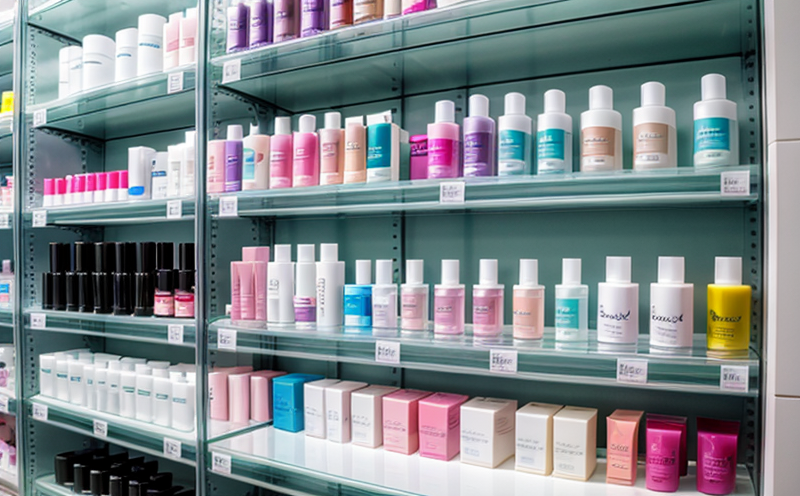Shelf Life Testing of Lipsticks and Balms
The shelf life testing of lipsticks and balms is a critical process in ensuring product quality, safety, and consumer satisfaction. This testing ensures that the cosmetic formulations maintain their physical properties, chemical stability, microbiological integrity, and sensory attributes over time. The primary objective of this test is to determine the optimal storage conditions and expiration date for these products. Proper shelf life testing helps manufacturers comply with regulatory requirements and safeguard consumers from potential health risks.
The stability and shelf life of cosmetic formulations are influenced by various factors including temperature, humidity, light exposure, and packaging materials. In this context, lipstick and balm formulations require specific attention due to their texture, colorants, and preservatives. The testing process involves exposing samples under controlled conditions that simulate real-world storage scenarios. This allows for the assessment of how these products degrade over time.
Shelf life testing typically follows international standards such as ISO 25098:2016 and ASTM D7432-11, which provide guidelines on sample preparation, test conditions, and evaluation criteria. The testing process includes the following steps:
- Sample Preparation: Lipsticks and balms are carefully selected for testing based on their batch number, manufacturing date, and expected shelf life.
- Storage Conditions: Samples are stored under various conditions to simulate different environmental exposures. These include high temperature (40°C), low temperature (-20°C), humidity (75% RH), and light exposure.
- Data Collection: Regular assessments of the samples are conducted at specified intervals using a range of analytical techniques such as rheometry, colorimetry, microbiological testing, and sensory evaluation.
The data collected during these tests provides insights into the physical properties (e.g., texture), chemical stability (e.g., pH, oxidation levels), microbiological integrity (e.g., microbial load), and sensory attributes (e.g., color, consistency) of the products. This information is used to determine the shelf life and recommend appropriate storage conditions.
| Application | Description |
|---|---|
| Quality Assurance (QA) | Ensures product consistency and meets regulatory standards. |
| R&D | Develops optimal formulation and packaging for extended shelf life. |
| Compliance Management | Meets international regulations on cosmetic safety and quality. |
Why It Matters
Shelf life testing is essential for several reasons. Firstly, it helps in determining the optimal storage conditions for lipsticks and balms to maintain their quality and safety over time. Secondly, it ensures compliance with international regulations such as EU Cosmetics Regulation (EC) No 1223/2009. Thirdly, it protects consumers by preventing the sale of potentially harmful or ineffective products.
Proper shelf life testing also benefits manufacturers in several ways. It helps them to develop formulations that meet the desired shelf life expectations and optimizes packaging materials for better protection against environmental factors. Additionally, it provides a competitive edge by ensuring product reliability and enhancing consumer trust.
Industry Applications
- Quality Assurance (QA): Ensuring that the products meet the specified quality standards.
- R&D: Developing new formulations and improving existing ones for better shelf life performance.
- Compliance Management: Meeting regulatory requirements to ensure safe and effective cosmetic products.
Eurolab Advantages
At Eurolab, we pride ourselves on offering comprehensive shelf life testing services specifically tailored for lipsticks and balms. Our state-of-the-art facilities and experienced team ensure that our clients receive accurate and reliable results.
We use cutting-edge technology and follow strict protocols to conduct these tests. Our services include:
- Compliance with international standards such as ISO 25098:2016 and ASTM D7432-11.
- Extensive data collection using a variety of analytical techniques including rheometry, colorimetry, microbiological testing, and sensory evaluation.
- Presentation of results in clear, easy-to-understand reports with recommendations for storage conditions and expiration dates.





